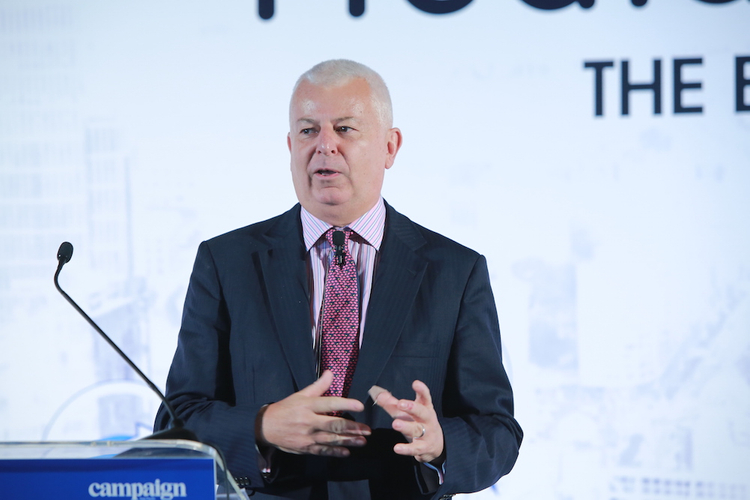While not an imminent existential threat, ad blocking has the potential to become one unless the industry absorbs and reacts to the reasons people are opting to use it. But is the industry capable of doing so?
Moderator Alistair McEwan, senior vice president, Asia, BBC, framed the discussion by pointing out that use of ad blocking software remains relatively low worldwide; about 200 million users out of an internet population of 3.3 billion, and higher in developed markets than emerging ones. Yet ad blockers result in a loss of US$22 billion in advertising per year and the pace of growth in downloads is worrying. Moreover, usage tends to be higher among younger demographics, and some mobile operators are even considering blocking ad traffic at a network level on behalf of their users.
Referring to an earlier speaker who discussed the promise of the next billion people to join the internet, Howell Wong, regional head of digital marketing for Moet Hennessy, urged the audience to imagine the disaster that would befall if ad blocking made that next billion inaccessible to brands.
Vineet Arora, managing director in China with Havas Media Group, cautioned that unlike another vexing issue, ad fraud, ad blocking can’t be tackled through technology. “The game will be played in the commercial area because it’s a value exchange about who pays how much for content,” he said. A tech arms race would lead to a world where media platforms install software to block ad blockers—leading, presumably, to the development of software to block ad-blocking blockers. Instead all parties in the ecosystem need to treat ad blocking as a catalyst to accelerate discussion about how advertising should behave as it evolves. Ad blocking also puts into “high relief” the need for higher-quality, more relevant advertising content, Arora said.
See all our Media360Summit coverage
This idea, that more polite and more compelling ads will create a more satisfactory user experience and stem the tide of ad blocking, seemed to be something of an article of faith. As one audience questioner put it, bad advertising has always created ad avoidance, while relevant content will always find a place.
If the industry gets a handle on ad stacking and follows the IAB’s LEAN (Light, Encrypted, Ad-choice supported, Non-invasive) recommendations, then ad blocking will be kept in check, Arora said.
Wong and his fellow marketer on the panel, Qaiser Bachani, GSK’s director of media for AMEA, both echoed the belief that relevant advertising, accurately targeted, will win through. But interestingly, both indicated that their strategy is focused more on content creation than online display advertising and programmatic buying. Wong, for example, expressed more interest in opt-in messaging channels such as Line, and said his company relies heavily on WeChat in China.
Audience members seemed to see the situation as more dire and expressed less optimism about the future. One pointed out that today, the industry subjects all users (except those who use ad blocking) to vastly slower page downloads in order to reach the sub-0.1 percent of users who are being targeted accurately enough that they click through—and this is with the best that ad tech has to offer in terms of targeting. From a user perspective, the value exchange is much further out of balance than the industry seems to realize, and unless it changes dramatically, ad blocking use will only increase.
Social media discussion
 The second panel in the track suggested that brands are calmly getting their use of social media down to a science. Some highlights:
The second panel in the track suggested that brands are calmly getting their use of social media down to a science. Some highlights:
- Carol Zhou, senior director, brand marketing, strategy and portfolio marketing for Marriott International in the region, discussed how her company has set up a command centre to listen to and react quickly to conversations across all the social channels run by its individual properties.
- Sanjeeb Chaudhuri, group head, brand and chief marketing officer with Standard Chartered, talked about how the bank has built the “internal wiring” that allows it to react to ‘moments of truth’: for example to route a problem a customer is having in, for example, Botswana, to that customer’s home bank for a solution.
- Peter Greenberger, director for emerging markets at Twitter, said smart brands use Tweets in a way similar to search queries, as data points to understand emerging issues before they rise to the level of being problems.
- In China, Zhou said, Marriott does more with user-generated content than it does in other markets because 80 percent of WeChat users post content. The company is also exploring, but not rushing into, e-commerce in the WeChat/Tencent ecosystem, where 50 per cent of users make mobile payments.
- Both Chaudhuri and Zhou expressed the importance of social media as an engagement channel for employees, who expect nothing less.
The social discussion was moderated by Jeannette Arrowood, APAC MD of Sysomos in Singapore.
@greg_gri both! Twitter can be your CRM channel and marketing (not to mention PR and IR)
— Peter Greenberger (@pgreenberger) February 25, 2016


































































































































































.jpg&h=334&w=500&q=100&v=20170226&c=1)
.jpeg&h=334&w=500&q=100&v=20170226&c=1)
.jpg&h=334&w=500&q=100&v=20170226&c=1)

.png&h=334&w=500&q=100&v=20170226&c=1)











.png&h=268&w=401&q=100&v=20170226&c=1)
